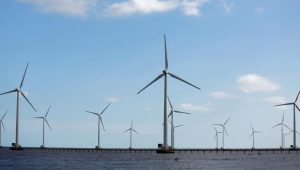Cargill’s Pyxis Ocean test of WindWings, which are large solid sails, revealed optimistic results suggesting that wind-assisted propulsion may have the capacity to influence the maritime industry towards renewable energy.
The MC Shipping Kamsarmax vessel’s six-month trial with two WindWings, developed by BAR Technologies, demonstrated fuel consumption reduction, hitting a predicted performance of 3 tonnes per day, which results in a reduction of 11.2 tonnes of CO2e emissions annually.
The ship, equipped with 37.5-metre WindWings, navigated major oceans, harnessing the wind to propel forward while reducing engine use, controlled via a bridge touch panel. The automated and wind sensor-regulated sails cut fuel consumption significantly, with a simple crew-alert system for sail adjustments.
The computational simulations and actual performance were extremely similar. Under ideal circumstances, petroleum savings amounted to 11 tonnes per day, which equated to a reduction in CO2e emissions of 41 tonnes per day. This is equivalent to shutting down 480 vehicles.
This technology is consistent with the 2030 low-carbon energy targets of the International Maritime Organisation (IMO). Diverse port infrastructures continue to present obstacles to integrating wind-aid propulsion (WAP) into global maritime systems. Widespread WAP adoption requires close cooperation with ports, terminals, and berths.















